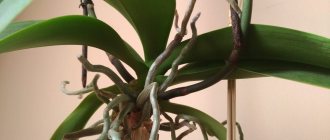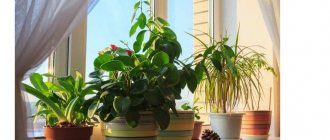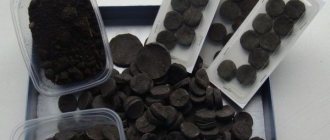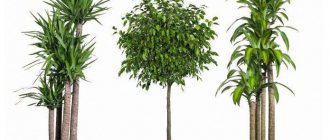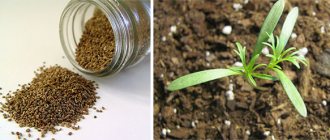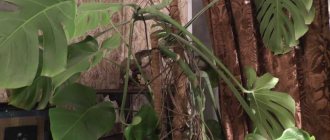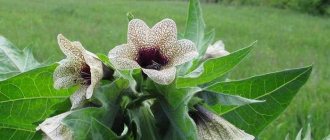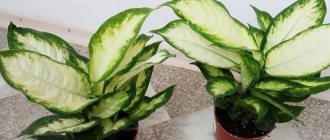Today we’ll talk about our favorite and popular indoor plants.
Indoor plants are grown to decorate the interior, refresh, purify indoor air and as an alternative to live pets, because some people care for plants like children.
Without flowers in pots, mini bushes, exotic palm trees, orchids, containers with summer flowering seedlings on balconies, would you agree that our life would be much more boring and grey?
In addition to the fact that flowers at home are beautiful and cute, there is another aspect - status - expensive, original plants in large houses, apartments, cottages - they greatly ennoble, stylize, and increase the cost of the interior.
Ratings of Russians' favorite flowers on Internet resources say that the most favorite indoor plants are:
Among the palms and trees, the most popular are: Yucca, Dieffenbachia, Dracaena, Monstera, Ficus.
Yucca
“Yucca (lat. Yúcca) is a genus of tree-like evergreen plants of the Agave family (Agavaceae). Previously, this genus was included in the subfamily Dracaenoideae of the Liliaceae family, later it began to be included in the Agave family (Agavaceae). According to modern concepts, the Yucca genus belongs to the Asparagaceae family.”
Pictured is Yucca
Yucca aloifolia most often lives in our apartments - this is a decorative and miniature species of these plants. Yucca non-ornamental grows mainly in hot countries - in the southern United States, Mexico and Central America.
Dieffenbachia
“Dieffenbachia (lat. Dieffenbachia) is a genus of evergreen plants of the Araceae family, common in the tropics of South and North America.”
Dieffenbachia in the photo
A plant with large oval leaves, a green stem, can reach a height of 2-3 meters, rarely blooms under artificial conditions. The juice of the leaves is poisonous, causing dermatitis, burns of the throat and skin. You need to use gloves when handling the plant and keep it away from children.
Dracaena
“Dracaena (lat. Dracāena) is a genus of plants of the Asparagus family, trees or succulent shrubs. The number of species, according to various sources, is from forty to one hundred and fifty. Most species are native to Africa, a few to southern Asia, and one to tropical Central America.”
Pictured is Dracaena
Like yucca from the asparagus family. Looks like yucca.
Several varieties of dracaena are grown at home. A worthy plant that harmoniously brightens up the interior.
Monstera (Philodendron)
“Monstera (lat. Monstéra) - large tropical plants, vines; genus of the family Araceae."
Pictured is Monstera
In its non-decorative form, it is common in hot countries - in the tropical rainforests of the equatorial belt of America, parts of Brazil, and Mexico.
A liana with huge “holey” leaves is a beautiful plant if taken care of well. There are versions that absorb negative energy and release carbon dioxide at night, so it should not be placed in the bedroom.
Ficus
“Ficus (lat. Ficus) is a genus of plants of the Mulberry family (Moraceae), which forms the monotypic tribe Ficus (Ficeae). Most species are evergreen, some are deciduous.”
There are only about 840 types of ficus, some of them are decorative and can be grown at home.
The most popular domestic species: Ficus rubber, Ficus dwarf, Ficus benjamina.
Each species has many more varieties and varieties.
Ficus benjamina. Usually a small tree with pointed, oblong, glossy leaves. At home, with good care, such a plant grows up to 2-3 meters in height.
In the photo Ficus benjamina
About Ficus Benjanimin varieties: “There are many varieties with leaves of different sizes, colors and shapes. The most popular among Russian gardeners: Danielle, Exotica, Monique, Barok, variegated Starlight and Reginald, small-leaved Natasja, Kinky, Wiandi. Dwarf varieties are used for bonsai.”
At auctions (on the Internet for example) you can buy such a flower for 400-1000 rubles.
Ficus rubber is a tree with large, dense, pointed-oval, smooth, glossy leaves 20-30 cm long and 10-20 wide.
In the photo, Ficus rubbery
Ficus elastica 'Decora' - with bronze young leaves;
“Ficus benjamina is the symbol tree of Bangkok, the capital of Thailand.” It’s hard to imagine, but these green trees are relatives of fig trees, growing in warm countries; fig trees, or fig trees, grow berries such as figs. Figs are very sweet and healthy berries; we sell them in dried form. Sometimes decorative ficus trees also bear fruit, somewhat similar to figs.
Roots
Root vegetables are distinguished by the presence of a large amount of storage tissue. They usually form in biennial plants in the first year of life. In the second year, flowers, fruits, and seeds are formed. Thus, the root crop allows the plant to endure a period of dormancy and complete development the following year.
Root vegetable is a conditional name. It has nothing to do with fruits, since it is formed not from a flower, but from vegetative organs - stem and root.
The ratio of stem and root during the formation of root crops is different, for example, in carrots almost the entire root crop is formed by the root, and in turnips by the stem.
Modern root vegetables are artificially bred by humans. They play an important role in its nutrition, as well as in feeding animals.
Decorative leafy indoor plants [edit | edit code ]
This group of indoor plants includes plants grown for their beautiful leaves or overall attractive appearance. The leaves can be not only green, but also of various variegated colors, different shapes, with a whole or dissected leaf blade, with a glossy, velvety or pubescent surface, etc. Some plants, traditionally classified as ornamental foliage, bloom beautifully at home, and therefore they are also included in the group of decorative flowering indoor plants. However, for most representatives of this group of plants, flowering is not of particular interest or does not occur when kept indoors.
Root cones
If the root crop is a thickened main root, then the root cones are strongly thickened adventitious and lateral roots. They, like root crops, are characterized by a developed storage parenchyma. Root cones form adventitious buds, therefore they are organs of vegetative propagation. Dahlia, sweet potato, and chistyak have these types of roots.
TOP 4 articles
who are reading along with this
Root
Root zones
Modifications of shoots
Leaf modification
Functions of the rhizome
First of all, rhizomes provide vegetative propagation of plants, making it more efficient.
For example, to plant irises, it is not necessary to take a large part of their shoot with leaves and flowers. It is enough to use a small rhizome element with buds and adventitious roots. Since this modification of the shoot is located underground, it has reliable shelter from all unfavorable environmental conditions. He is not afraid of drought. In extreme heat, only the leaves will die. But the underground part, which is the plant’s shoot itself, will remain viable. When favorable conditions occur, green leaves will grow again from the buds. Rhizomes are a valuable underground supply of water, minerals and organic substances that plants formed during the period of sufficient moisture and photosynthesis. Thanks to this important feature, all plants with this modification are perennial. Their underground part remains viable from early autumn until spring precisely thanks to the supply of all the substances necessary for this, which are in this modification. So, the rhizome is an underground modified creeping shoot
Its main parts are elongated internodes, buds, simple leaves and adventitious roots. The rhizome performs important functions, thanks to which the plant easily endures any unfavorable periods underground and spreads quickly. This is the storage of water with nutrients and the implementation of vegetative propagation
So, the rhizome is an underground modified creeping shoot. Its main parts are elongated internodes, buds, simple leaves and adventitious roots. The rhizome performs important functions, thanks to which the plant easily endures any unfavorable periods underground and spreads quickly. This is the storage of water with nutrients and the implementation of vegetative propagation.
Breathing roots
This type of modified root is also found in the tropics. It is characteristic of trees growing on marshy ocean coasts. The root system of such plants is complex and has air-bearing tissue, aerenchyma. Through the holes, air enters the aerenchyma and then passes to remote underwater areas of the plant. Similar modifications occur in some ferns and red mangrove trees.
Rice. 2. Respiratory roots.
Plants with aerial roots
Aerial roots are adventitious organs of plants primarily designed to absorb moisture from the air. In some plants they serve as an additional basis, and in some inhabitants of swamps such roots (pneumatophores) protrude to the surface for breathing.
Which plants have aerial roots?
Many plants have adventitious aerial roots, and they perform a wide variety of functions:
- Adventitious roots are often found in tropical plants - lianas and epiphytes. They are green in color and actively participate in photosynthesis, absorbing oxygen and moisture from the air.
- In orchid plants, aerial roots take on a leaf-like shape and become real leaf substitutes.
- In marsh plants, aerial roots become additional stilt supports, growing to the size of powerful trunks. Such trees can look like an entire mangrove grove with many false trunks and a single crown. The banyan tree, also known as the sacred fig tree, often has similar roots.
- Another marsh plant, cypress, growing on silt soil that is constantly flooded with water, forms aerial roots designed to absorb air rather than moisture. They grow not downwards, but upwards, and through their pores oxygen enters the underground parts of the plant, immersed in viscous silt.
- Another plant with aerial roots is ivy. This is a climbing plant with long and creeping aerial roots, whose purpose is to cling to various supports, and is capable of climbing tree trunks, stones, and rocks to a height of up to 30 meters.
Indoor plants with aerial roots
The most famous and popular plants with aerial roots among home gardeners are:
- Monstera
is a powerful tropical vine that is very popular among lovers of indoor floriculture. The already impressive appearance of this “monster” is complemented by a large number of aerial roots that look like snakes. - Pandanus or screw palm
. A very beautiful indoor plant that does not require complex care. It grows very quickly to enormous sizes and has aerial roots on the trunk. In the wild, the adventitious roots of pandanus have the purpose of rooting in the ground to create additional support trunks, since the lower part of the trunk dies over time. - Ficus
. An evergreen tree with aerial supporting roots. A very common houseplant with many subspecies. - Orchids
. The presence of aerial roots in these beautiful indoor flowers helps them “extract” moisture from the air. These additional roots provide support for the main roots, capturing moisture and nutrients from the air.
Columnar roots
The peculiarity of columnar roots is that they are laid on the branches. Such shoot roots are typical for the banyan tree.
Banyan is not the name of the plant. This is the name for the growth habit of some ficus plants. Any tree with a voluminous crown, supported by columnar roots, can be called a banyan.
Rice. 3. Indian banyan tree.
Absorption of water and minerals by roots
Absorption of water and minerals by roots
Absorption of nutrients by the root occurs in active and passive ways. Active is associated with metabolic processes, energy expenditure, and breathing processes. The second, passive, is associated with the diffusion of substances. It does not depend on metabolic processes.
Through the root hairs, water and minerals enter through the passage cells into the vessels of the central cylinder. The place where the root enters the stem, that is, the root vessels in the stem, is called root collar . It is somewhat thickened. Hydrostatic pressure is formed due to the entry of water into the vessel from the parenchyma cells that surround them. This pressure is called root pressure . The ability of the root system to move water up the stem is called lower root motor . The ascending current from the root to the above-ground part of the plant is explained by the presence of root pressure and the suction action of the leaves due to transpiration (evaporation of water by the leaves).
The magnitude of turgor pressure in all parts of the plant is the same. Turgor (from Latin turgor - swelling, filling) is a tense state of the cell membrane, which arises due to the hydrostatic pressure of the cell contents. Thanks to turgor, plant tissues have a certain elasticity. Osmotic pressure is the excess pressure exerted by a solution, which prevents the solvent from penetrating a semipermeable membrane from a less concentrated solution to a more concentrated solution. Osmosis is the diffusion of water through a semi-permeable membrane from an area of lower solute concentration to an area of higher solute concentration until they equalize. The suction force is greater in the part where the osmotic pressure is greater:
S = P - T,
where S is the suction force, P is the osmotic pressure, T is the turgor pressure.
The internal pressure on the plant cell wall always exceeds the pressure on it from the external environment.
Table “Modifications of roots”
| Types of roots | Examples of plants | Function |
| Roots | Turnips, radishes | storing |
| Root cones | Dahlia, Lyubka | storing |
| Respiratory | Avicennia | Supplying air to underwater areas of the plant |
| Stilates | Rhizophora | Increasing the support area |
| Columnar | Ficus | Increasing the support area |
Dracaena
The optimal humidity for dracaena is 65%. Drier air may cause leaves to turn yellow. An increased content of water vapor brings another problem: dracaena begins to form aerial roots.
This in itself is not dangerous. The plant is native to the arid regions of Europe, Asia and Australia. Thus, it has adapted to extract moisture from the air.
However, it is still worth reducing the humidity in the room. At relatively low temperatures during the dormant period, the perennial may suffer from diseases.
What to do with them: step-by-step instructions
If there are many of them
- If the orchid has more than three aerial roots, it is necessary to monitor the watering regime. With excessive moisture, the water balance is disturbed and the plant begins to grow in different directions.
- Reduce the amount and frequency of watering, otherwise the roots will begin to rot and lead to the death of the plant.
- You can remove overgrown roots in the following cases:
- if the roots begin to rot from excessive watering;
- if the roots begin to dry out due to lack of moisture or too dry air.
If not
- The absence of aerial roots warns that the orchid does not receive enough light or moisture.
- An incorrectly selected filler plays an important role in the absence of roots. If the plant has not been replanted for a long time, then it is necessary to soon change the soil and move the plant to a more suitable place, enriching the soil with nutrients for fast and healthy development.
If only adventitious roots remain
Aerial roots of an orchid
Adventitious roots weaken orchids. Therefore, it is necessary to carry out the following activities:
- Examine the damaged root system and carefully remove all dead and rotten shoots, otherwise this process will transfer to healthy fates and repeat again after a while.
- Disinfect the cut areas with brilliant green or activated carbon powder.
- Place the orchid in a ceramic or glass container filled with water at room temperature. Change the water every day and dry the plant regularly.
- Maintain the required lighting and room temperature, it should not exceed 27 degrees.
Underground organ root: types of roots
Plant roots can be different in color, shape, length, and branching. In total, three main types of root types can be distinguished. The names of the types of roots are as follows.
- Main. This is the main axial root, which goes deepest underground. As a rule, it is thicker than the others and longer. It originates from the embryonic root. It contains the main conducting and absorption zones, through which substances are transported to the plant stem, and from the latter they are distributed throughout the body.
- Subordinate clauses. These structures extend directly from the main root and branch laterally, increasing the total mass of the entire system. Their function, like the main one, is to absorb substances and hold the plant in the ground.
- Lateral. These elements are thin hair-like roots extending from the adnexal structures. Their thickness is sometimes only one or two millimeters. Different types of roots are not the same in number, but it is the lateral ones that dominate in the total mass in terms of this indicator.
Thus, terrestrial plants are characterized by three types of roots, which in general organic combination form entire systems.
